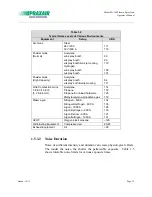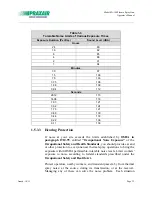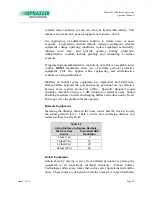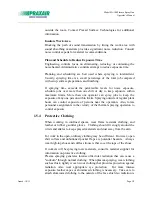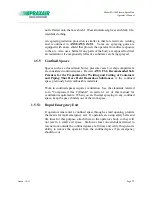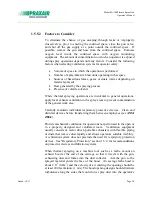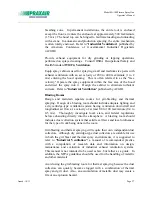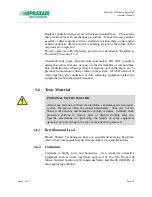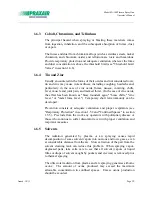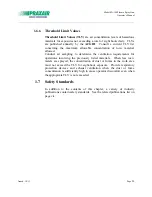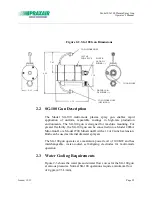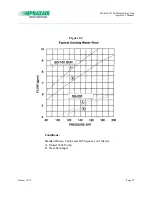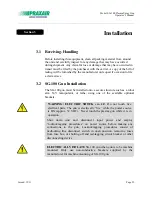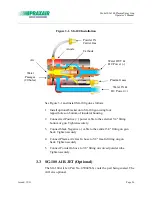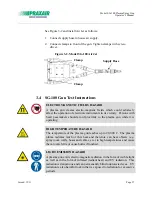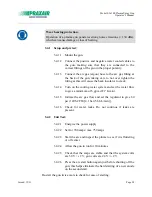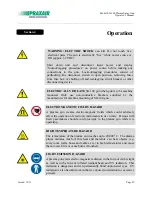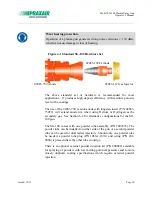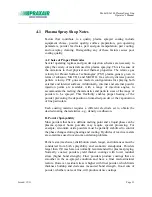
Model SG-100 Plasma Spray Gun
Operator’s
Manual
_____________________________________________________________________________________________________________________
Issued: 10/11
Page
16
1.5.5.2 Factors to Consider
To eliminate the chance of gas escaping through leaks or improperly
closed valves, prior to entering the confined space, close the gun valve,
and shut off the gas supply at a point outside the confined space. If
possible, remove the gun and hose from the confined space. Evaluate
oxygen level inside the confined space with oxygen monitoring
equipment. The amount of contamination to which an operator is exposed
during spray operations depends on many factors. Consider the following
factors when selecting ventilation systems for operator safety:
Volume of space in which the operation is performed
Number of spray/abrasive blast units operating in that space
Sources of hazardous fumes, gases, or dusts (varies depending on
material sprayed)
Heat generated by the spraying process
Presence of volatile solvents
Where thermal spraying operations are incidental to general operations,
apply local exhaust ventilation to the spray areas to prevent contamination
of the general work area.
Carefully maintain individual respiratory protective devices. Clean and
disinfect devices before transferring them between employees (see
ANSI
Z88.2
).
Provide mechanical ventilation for operations not performed in the open or
in a properly designed and ventilated room. Ventilation equipment
usually consists of motor driven portable exhausters with flexible piping
or ducts that remove dust rapidly and allows operators suitable visibility.
A ventilation system does not preclude the need for respiratory protection
devices. See "Respiratory Protection," section 1.5.2, for recommendations
on protective devices and filtration systems.
When thermal spraying on a machine tool such as a lathe, mount an
exhaust hood at the end of the carriage so that it travels with the gun,
exhausting dust and fumes into the dust collector. Aim the gun so the
sprayed material enters the face of the hood. An average lathe hood is
about 2 ft
2
(0.2m
2
) and the velocity of air entering the opening should be
at least 200 feet/minute (1 m/s). The hood opening design should eliminate
turbulence along the sides that could force spray dust into the operator's










